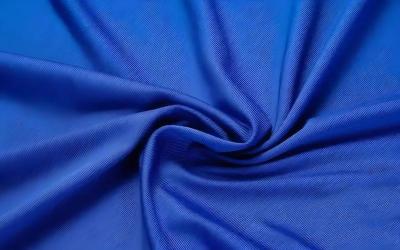
How to Select Cut-Resistant Gloves?
2025-08-20 22:19
In industrial and manufacturing environments, hand safety is a critical concern. Among the essential personal protective equipment (PPE), cut-resistant gloves serve as a vital barrier against one of the most common workplace injuries: hand lacerations. Selecting the appropriate cut-resistant glove is not just a procurement task; it's a significant commitment to workforce safety, operational efficiency, and cost management. This comprehensive guide explores the key factors, standards, and innovations that inform the choice of cut-resistant gloves for industry professionals, ensuring you can make an informed decision that protects your most valuable asset—your worker.
Understanding Cut Resistance: Materials and Mechanisms
Cut-resistant gloves don't function like armor; they employ advanced materials science to dissipate and resist energy from sharp edges. The level of protection primarily depends on the materials used in their construction.
High-Performance Polyethylene (HPPE) fibers, such as Dyneema®, are renowned for their exceptional strength-to-weight ratio. They offer superior cut resistance while remaining remarkably lightweight and flexible, which helps minimize hand fatigue during extended periods of use. Aramid fibers (e.g., Kevlar®) provide excellent thermal resistance in addition to good cut protection, making them suitable for environments with multiple hazards. Stainless steel and other metal alloys are frequently woven into fabrics or used as core components in yarns, delivering very high levels of mechanical cut resistance. Furthermore, composite materials blend various fibers (e.g., HPPE, glass fiber, stainless steel, often wrapped with elastanes like Spandex) to achieve a balanced combination of cut resistance, dexterity, and comfort.

Many gloves incorporate coatings to enhance specific properties like grip, durability, or liquid resistance. Nitrile coatings excel in resisting oils, chemicals, and abrasion, making them ideal for automotive, metalworking, and food processing applications where liquids are prevalent. Polyurethane (PU) coatings offer superior grip on both dry and slightly oily surfaces, excellent abrasion resistance, and often better breathability compared to nitrile. Antimicrobial coatings are also becoming more common; they inhibit bacterial growth, thereby improving hygiene, especially in food handling and healthcare scenarios.
Decoding Safety Standards:
Understanding international safety standards is absolutely crucial for selecting the right glove. These standards provide quantifiable and comparable metrics for evaluating glove performance. The EN 388:2016 standard (European, but globally recognized) assesses protection against mechanical risks. Its rating includes a sequence of numbers:
Abrasion Resistance (scale 1-4)
Cut Resistance (scale 1-5 based on the coup test, or A-F based on the more accurate ISO 13997 TDM test)
Tear Resistance (scale 1-4)
Puncture Resistance (scale 1-4)
The ANSI/ISEA 105-2016 (American national standard) evaluates cut resistance using a different methodology (applying a load weight on a straight blade under specified conditions) and assigns a rating from A1 to A9, with A9 representing the highest level of protection. For operations in or supplying to the Chinese market, the GB24541-2009 standard is the national benchmark for hand protection against mechanical risks, also covering abrasion, cut, tear, and puncture resistance.
It is paramount to select a glove with a cut resistance level that accurately matches your specific operational hazard. Over-protecting can lead to unnecessary costs and impaired dexterity, while under-protecting exposes workers to unacceptable risks.
A Step-by-Step Guide to Selection: Matching the Glove to the Job
Choosing the right glove requires a systematic and thoughtful approach. Initiate the process with a thorough Job Hazard Analysis (JHA). Identify the primary cut hazards: sharp metal edges, sheet metal, glass, knives (whether stationary or moving blades), or specific machinery. Also, consider secondary hazards such as puncture, abrasion, impact, heat, liquid exposure, or the specific need for enhanced grip.
Next, determine the required Cut Resistance Level based on your JHA findings and the applicable safety standards. Consult standard charts that link typical tasks to recommended protection levels. For instance, general material handling might necessitate Level 3-4 (EN) / A4-A6 (ANSI), while handling extremely sharp glass or metal sheets may demand the highest levels: Level 5/F (EN) / A7-A9 (ANSI).
Dexterity and Comfort are critical factors that directly influence worker compliance and overall productivity. Bulkier gloves generally offer higher protection but can significantly reduce dexterity. For tasks requiring fine motor skills (e.g., precision assembly, electronics handling), seek out gloves made from advanced high-performance fibers like HPPE or those incorporating thin stainless steel constructions. These materials can offer substantial protection without sacrificing tactile feel and finger agility. Prioritize ergonomic designs: features like stretchable materials, pre-curved fingers, and breathable backs enhance comfort during long shifts. A proper fit is non-negotiable – gloves that are too large can impair grip, get caught in machinery, and reduce control, while gloves that are too small cause fatigue, restrict blood flow, and increase discomfort. Always ensure a range of sizes (XS-XXL) is available for workers.
CJTI: Your Trusted Manufacturing Partner in Functional Fabrics for Safety
Selecting the right cut-resistant glove is a complex decision with direct implications for safety, productivity, and your bottom line. By understanding the hazards, standards, materials, and human factors involved, you can make an informed choice that truly protects your most valuable asset: your people.
This commitment to excellence in protection is where CJTI excels. As we have explored the critical aspects of choosing cut-resistant gloves, it's important to recognize that at the heart of every high-performance glove lies advanced functional fabric technology. For years, CJTI has been a trusted and reliable manufacturing factory, deeply engaged in the research, development, and production of precisely these kinds of innovative and protective textiles. We specialize in engineering high-quality fabrics that form the essential foundation of superior PPE, including cut-resistant gloves. Our core expertise lies in creating and supplying technical textiles that deliver not just exceptional protection, but also durability, comfort, and outstanding value. When you partner with CJTI, you are selecting a reliable source dedicated to quality, innovation, and excellence in the functional fabric domain.








